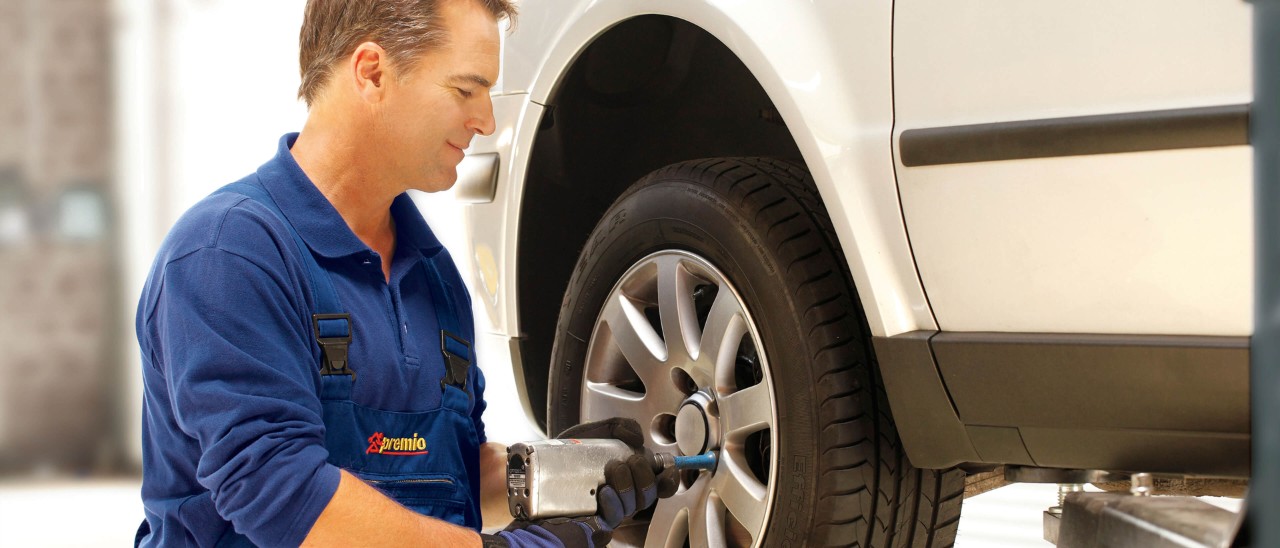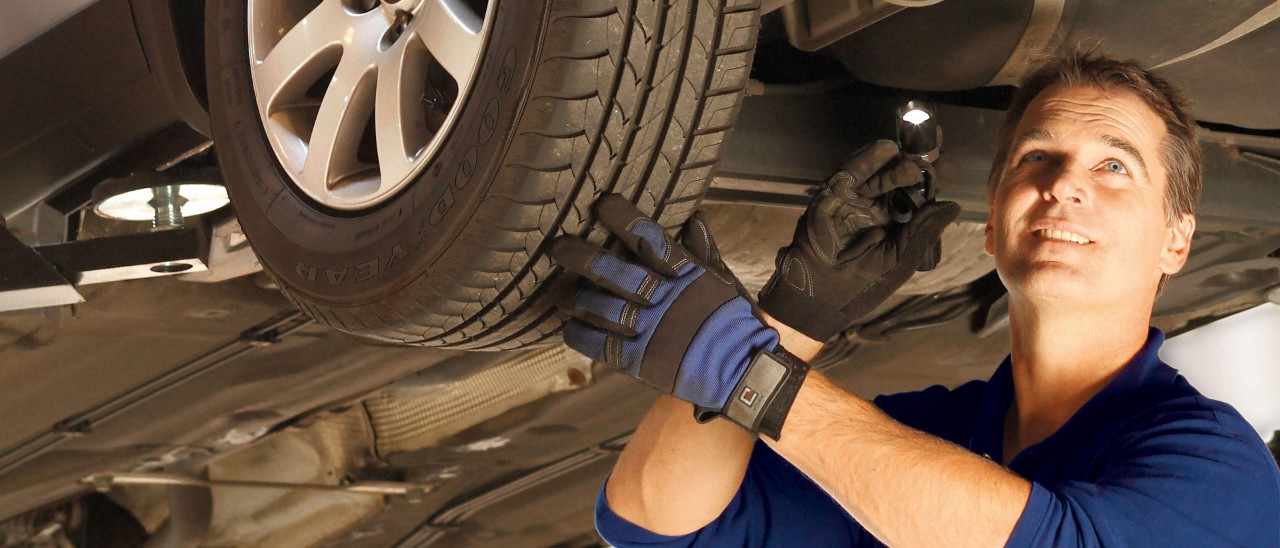Early motor cars were made without spare wheels, and getting a puncture was something that all drivers feared. The Stepney Spare Wheel was invented so driver’s fears were put as ease and over 100 years later we’re still using spare tyres today.
This type of spare tyre matches the current ones fitted to your car. If you’re using a full-size matching tyre as a spare, remember to make it part of your vehicle’s tyre rotation.
These lightweight, temporary tyres have a shallow tread depth. Their smaller size makes them ideal for cars with a smaller boot space compared to standard tyres.
The majority of new cars don’t come with a spare tyre, instead they’re fitted with a temporary tyre repair kit that forces a latex sealant through the tyre valve to plug the puncture. These tyres are intended to get the driver to a safe place or garage in order to change the tyre. But do the pros of using a tyre repair kit outweigh the cons?
You may be lucky enough to never need your spare tyre, but that shouldn’t stop you checking its road worthiness from time to time. There are a few points to remember when driving on a spare:

When it comes to buying a spare tyre for your vehicle, it’s ideal to check the space available in your boot as that can be the deciding factor as to what spare tyre you buy. You’ll also need the right tools and jack to be able to fit the spare if you ever get a puncture.
Take a look at our dealer locator to find out where you can buy Dunlop tyres near you.

Many people assume changing a flat tyre is too difficult and rely on a recovery team to change it for them. But it’s not as difficult as you think and it’s definitely something you can do yourself, especially when you follow our safety guidelines and have the right equipment to hand.

Getting a puncture doesn’t necessarily mean the whole tyre needs to be replaced. An approved tyre repair specialist can repair the tyre if the puncture is less than 6mm in size and on the central tyre tread, however if the sidewall has been damaged the whole tyre will need replacing as its integrity will be compromised.
Modern car design is slowly phasing out the use of spare wheels in favour of tyre repair kits or run flat tyres. One of the biggest reasons behind this is space. Repair kits are much smaller and lighter than a spare tyre. This is incredibly important in electric vehicles such as plug-in hybrid cars as they are much heavier than conventional cars and need to be more economical with fuel when they use their fuel-powered engine.
There was a time when cars would come with five identical wheels – four on the road and a spare in the boot. It’s more commonplace today for cars to have alloy wheels but they’re more expensive than the steel wheels they replaced, so if there’s a spare tyre in your boot chances are it’s a non-standard spare designed for temporary use.
Non-standard spare tyres are much narrower than your other tyres which means you should only drive as far as a tyre dealer to have your original repaired or replaced. The maximum speed you can travel on a spare is 50mph and although there’s no maximum distance, it is recommended to only travel 50 miles.

The air pressure of your spare tyre completely depends on the type of spare tyre you have. Check the vehicle handbook or spare tyre sidewall to find the recommended air pressure.
Although you might not have used your spare tyre, you should check your spare tyre pressure at regular intervals just to make sure no air has leaked out in that time. Simply use a pressure gauge to check the PSI of your spare tyre.
Run flat tyres, also known as self-supporting tyres, are made with reinforced sidewalls that can support the car for a limited period if the tyre loses pressure, rather than air pressure to support the car if the tyre gets a puncture. They’re designed so you can continue to drive on them at a limited speed no more than 50mph for a maximum of 50 miles, unless the vehicle manufacturer states otherwise, to the nearest tyre garage. If you have run flat tyres then you won’t have to deal with a spare tyre, tool and jack if you get a puncture. Instead, you should make your way to your nearest tyre dealer to have your tyre repaired or replaced.
